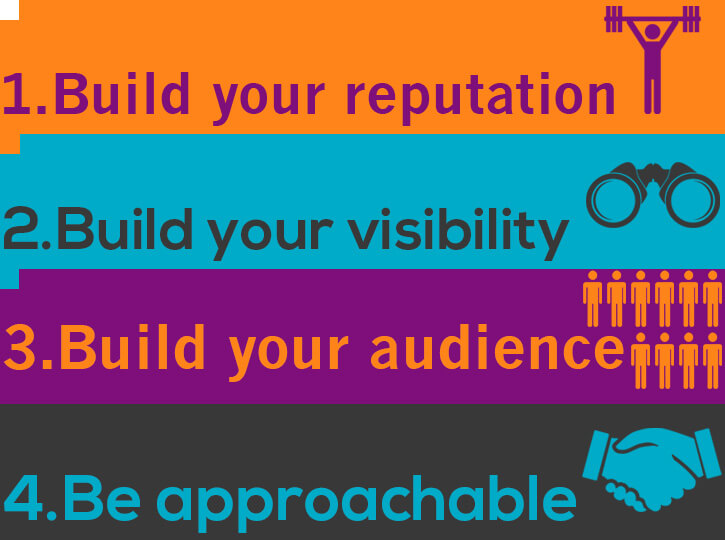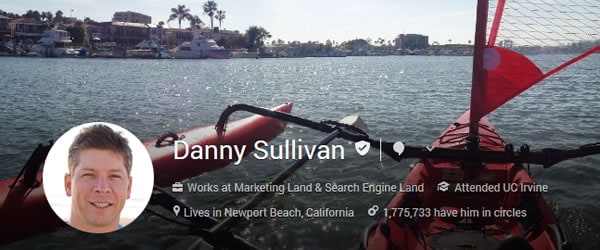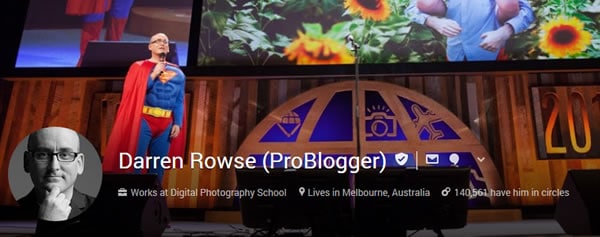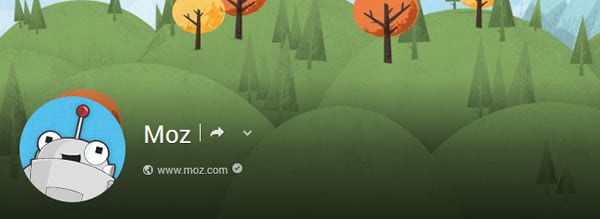Digital marketing updates and knowledge sharing process.Any individual can learn digital marketing here. Idigitalmarketing provides latest articles on SEO,Digital marketing ,Google adwords,and latest Google algorithms.We also provide you seo interview questions and latest updates happening in the digital marketing
Wednesday, 29 April 2015
Why digital Marketing
Digital marketing is marketing that makes use of electronic devices (computers) such as personal computers, smartphones, cellphones, tablets TV and game consoles to engage with stakeholders. A component of Digital marketing is Digital Brand Engagement. Digital marketing applies technologies or platforms such as websites, e-mail, apps (classic and mobile) andsocial networks. Digital Marketing can be through Non-internet channels like TV, Radio, SMS, etc or through Internet channels like Social Media, E-mails ads, Banner ads, etc. Social Media Marketing is a component of digital marketing. Many organizations use a combination of traditional and digital marketing channels; however, digital marketing is becoming more popular with marketers as it allows them to target and track many aspects[1] including their Return on Investment (ROI) more accurately compared to other traditional marketing channels.
According to the Digital Marketing Institute, Digital Marketing is the use of digital channels to promote or market products and services to consumers and businesses.
Tuesday, 28 April 2015
How To Create Quality Content For Website and Optmize seo Friendly
Quality Content Factors: A List That’s Actually Helpful
We’re all chasing “quality content,” but what does that actually look like? Columnist Nate Dame explores 20 concrete characteristics of great content.

We’re all chasing “quality content” — but what does that actually look like? In an apparent effort to help publishers cope with Google’s intensified focus on “content quality” as a ranking factor, the search giant released a notoriously unhelpful list of questions that publishers should ask themselves when developing content.
Bing was a little more resourceful with their more recent guidelines for quality content. But there are still plenty of holes.
So, here’s my attempt to one-up Google and Bing — a list of twenty concrete, proven characteristics to help content creators hit the formerly-elusive Quality Content mark.
1. Help The User Complete A Specific Task
Create content geared toward a clearly defined keyword + user intent combination, rather than a list of arbitrary keywords. Understanding how to discover user intent, and organizing that data, will enable you to design content that leads the user quickly and efficiently to his/her next step.
2. Organize Thematic Subsections
Google’s fight against keyword stuffing has led to smart algorithm updates that recognize authoritative topical content by identifying keyword synonyms and related terms and phrases.
Help search engines decipher your page by identifying the most important related keywords, and structuring each into its own subsection.
3. Make Sure It’s “Made To Stick”
In Made to Stick: Why Some Ideas Take Hold and Others Come Unstuck, authors Chip and Dan Heath outline a framework to identify if an idea is “sticky.”
The six concepts central to “sticky” content (central to “SUCCES”) ask if it is Simple, Unexpected, Concrete, Credible, Emotional, and/or uses Stories.
4. Write A Strong Title & H1
It can be tempting to get creative and/or clever with your titles, but readers don’t have time to decipher subtleties. Be clear and concise, and make sure to use a tool like Moz’s Title Tag Preview Tool or Portent’s SERP Preview Tool, to make sure it’s not too long.
5. Make Sure It Inspires, Educates And/Or Entertains
A combination of two or three of those qualities is even better, but — especially for starters — identify the primary purpose of the content and be faithful to it.
This one has a lot to do with titles too: make sure the title and headers set the reader up for the kind of content you’re providing.
6. Ask Yourself If You Would Share It
Great content has inherent, spreadable value. Intentions aside, does the content actually speak to you? Would the people in your social networks — friends and/or industry contacts — be interested in it?
7. Make Sure It’s Relevant
Hopefully this doesn’t really need to be said, but I’m sure I’m not the only one who has been caught off-guard by clever media, or a guest post, that doesn’t seem to have much to do with a brand’s niche or a website’s topic.
Don’t sacrifice relevancy in an attempt to be entertaining.
8. Watch Your Word Count
There are no hard-and-fast rules here, of course, and the very best thing you can do is test different content lengths with your unique audience. In general, longer content seems to be the favorite. In terms of ranking, about 1000 words seems to be ideal, according to Searchmetrics’ 2014 ranking factors study.

For social shares, 1500 words is even better, according to a piece written by Neil Patel on the Quicksprout blog.
But user experience is always priority #1. Don’t compromise quality in an effort to hit a certain word count, and don’t take any study results as the final word for your particular audience.
9. Write For Your Audience (Not Your Peers)
This is a special challenge in tech and niche industries. SEO, for example, written for SEO experts is much different from SEO written for business owners and traditional marketers.
If your audience is industry professionals, don’t talk down to them. If your audience is not familiar with the details of your expertise, don’t get fancy and lose them in technical jargon.
10. Proofread!
(My editorial team made sure I included this one.) It doesn’t matter how long you’ve been doing this, everyone misses a keystroke or reverses characters once in a while.
Double-check for spelling and grammatical errors. Nothing erodes professionalism and credibility like a simple mistake that you were too lazy to correct.
11. Ease Up On The Primary Keyword
Keyword stuffing was never a good idea, and Panda keeps knocking it down further. Still, lazy writing can lead to unintentional keyword stuffing too, especially in headers.
Once your content is written, do a Command+F/Ctr+F search for your primary keyword(s) to make sure it’s not saturating the page. Rewrite or replace with synonyms as needed.
12. Fact-Check
Click those links one more time and just make sure that a digit didn’t get copied incorrectly, andcheck the date on any study you’re citing.
Every topic and industry will have different definitions of “old,” but don’t cite social media statistics from 2008. This goes for new and existing content.
Check your analytics periodically, and look for old content that may still be performing well. Go back to those blog posts and make sure they’re up-to-date!
13. Clearly Define Author(s) On The Page
Google Authorship may be a thing of the past, but Author Rank is still a factor.
A picture and a short bio on every piece of content will give search engines the information they’re looking for and enhance the user experience.
14. Check The AlchemyLanguage API
Make sure the AlchemyLanguage API is identifying entities, keywords, and concepts as expected.
AlchemyAPI offers a great tool that displays what Google’s crawlers probably see when examining your website.
15. Don’t Send Mixed Messages
Make sure each page stays on-topic. This ties in with understanding user intent — and creating unique content to help each intent complete a specific goal.
But if you haven’t gotten that far, it applies to existing content as well. Don’t throw a sales pitch in the middle of resource content.
16. Link To Good Sources
Practicing SEOs know this, of course, but it deserves to be on any content checklist. Make sure the content links out to a reasonable number of reputable, high-quality sources.
17. Link Natural Phrases
Make sure those outbound links are using natural phrases. Don’t stuff the <a href> with keywords, and don’t hyperlink the word(s), “here” or, “click here.”
18. Avoid Bad Sidebar Content
There is reason to believe that supplemental or sidebar content that is useless or distracting can cause an adverse reaction with a certain Panda.
19. Make It Visually Appealing
Text on the page should be broken up into bite-sized pieces: no long paragraphs, use headers consistently, indent quotes, use bullet points for lists, etc.
And make use of images and video wherever reasonably possible to add color and visual interest. (Just make sure your page design is supporting your SEO strategy.)
20. Offer Unique Value (Not Just Unique Content)
Any good writer can rearrange words on a page to create content that doesn’t technically appear anywhere else on the internet.
But good content offers a unique value by providing readers with insights and actionable takeaways that no one else does. Does “unique value” sound difficult? Well, it is, but it must be done.
Bonus: What Makes Content ‘Thought Leadership’
Moving from high-quality content to thought-leadership material doesn’t necessarily mean going wider as much as it does going deeper. The checklist doesn’t get much longer, but each element becomes weightier. If you haven’t had enough yet, Bob Buday from The Bloom Group shared his team’s eight requirements for thought-leadership material.
- Relevance – Addressing a burning issue for your target audience
- Novelty – Having a fundamentally new way to solve a problem
- Depth – Possessing substantial knowledge about the problem and how to solve it
- Validity – Proving your solution works through real examples of companies that have solved it your way with measurable benefits
- Practicality – Demonstrating you have a well-thought-out approach to solving the problem, and understand how to overcome the obstacles to adoption
- Rigor – Having hard-to-dispute logic about the problem and the best way to solve it
- Clarity – Communicating the point of view in words your target audience understands
- Coherence – Having frameworks or models that simplify the problem and/or solution
Does every blog post need to meet all eight of those criteria? Does every content asset you publish need to reflect all 20 of the factors above? Perhaps not, but the more you can hit, the better chance you have of appeasing (Google head of Webspam) Matt Cutts’ (and the real world’s) demand for quality content.
Some opinions expressed in this article may be those of a guest author and not necessarily Search Engine Land. Staff authors are listed here.
Your First Steps In Content Marketing
Your First Steps In Content Marketing
New to content marketing and not sure where to begin? Columnist Eric Enge provides a helpful outline for SEOs (or anyone) looking to start incorporating this crucial digital marketing tactic.

Any successful SEO strategy still requires a promotional component — something that builds your business’ reputation and visibility while also netting you links to your website. Yet, we still live in a world where most businesses don’t truly engage in content marketing. In today’s post, I am going to outline how you can get started with such a campaign.
Whether you are in a large enterprise or a small business, it can be difficult to launch a large-scale campaign. While the enterprise has a larger overall marketing budget, the money in that budget is tightly allocated and is likely already spoken for. Pulling a big pile of dollars out to spin up a major content marketing effort is just not going to happen overnight.
The big advantage that a small business has is that once the decision to pursue content marketing is made, making it a priority is quite a bit easier. However, the total number of dollars in the budget is probably still limited.
In either scenario, it’s inevitable that the great majority of businesses will need to start slowly. With that in mind, let’s take a look at the first few priorities in getting going with a content marketing campaign that also has a major impact on SEO.
Your Top 4 Priorities
When pursuing content marketing to support your SEO needs, just be aware that directly chasing links with it can turn into a big “uh-oh.” This often leads to the type of behavior that caused Googler John Mueller to say this about link building: “In general, I’d try to avoid that.”
To be fair, a lot of what is driving John’s response is the pursuit of links for links sake. Let’s back up, and instead look at the key priorities you can set for yourself so that your content marketing will head in the right direction. Here are your top four:
- Build Your Reputation. When people think about your brand, you want them thinking good thoughts. You can use content marketing to help build that image on your behalf.
- Build Your Visibility. Content marketing can help build your visibility in many ways. The basic concept is to create content that people are going to want to share with others (via social media and other means), and this gets you exposure to new people.
- Build Your Audience. As I discuss below, there are many ways to build your reputation and visibility by publishing content on other platforms (other people’s websites and social media, for example). In the long run, though, this is rented real estate. You need to build your own set of fans who will look for your content wherever you may end up publishing it.Audience growth is incredibly important, as your audience will help you gain exposure to more and more new audiences. Every time you post and share you will get a ripple effect like this one:

- Be Approachable. Reputation, visibility, and audience are all great, but you also need to be perceived as approachable. You can have thousands, or millions, of raving fans, but if they are afraid to engage with you, it will limit the business benefit of what you have accomplished. Make sure you engage with others — influencers and non-influencers — so the audience at large understands that you are not sitting in some ivory tower.
Getting these four parts of your strategy right is essential. Over the long run, it’s what will lead to the best quality links with the least possible risk. It’s one of those odd things that sometimes happens in life — the less you focus directly on what you want (in this case, high-value links), the more of them you will get.

Guest Posting Is A Great Place To Start
As I laid out earlier, new content marketing campaigns don’t materialize out of thin air suddenly staffed with five full-time people. Inevitably, you will be given limited resources and asked to prove its value (and to prove your ability to execute it).
Getting started with a simple guest posting campaign may be the best way to get off the ground. To me, this means establishing one or two monthly columns on some of the top sites that cover your market (and that reach your target audience). Note the emphasis on columns here.
Writing a column on a high authority site that reaches your target audience is a great way to start working on the four priorities I outlined above. It enables you to build your reputation by publishing content that helps solve problems for others. Your visibility increases for the simple reason that you are being given a platform on someone else’s website — in front of their audience.
This content can build your audience because some of the people on that third-party website will hunger for more from you. This is the first step in them becoming your audience. This graphic gives you some idea how guest posting in the right places leads to growing your audience:

Finally, provided that you respond to comments and questions about your content, it causes people to see you as being approachable, too.
Note: Yes, I know that Matt Cutts said to “stick a fork” in guest blogging for SEO — but. per our top four priorities, that’s not what we are doing here. Remember our focus: Reputation, Visibility, Audience, and Approachability.
Social Media Visibility Is A Great Place To Start, Too
The other easy place to get engaged early on is with social media. Like guest posting, this is not going to immediately cause money to come pouring into your business, but it will help you get started on each of your top four priorities.
As with guest columns, you need to focus on using social media to help people, not simply turn it into a broadcast medium where you spout your old-world marketing messages. This will help grow your reputation, visibility, and audience all at once. Here is a visual for how social media helps you develop your own audience:

Provided that you respond to comments and interact with others via social media, it will show people that you are approachable as well.
Beyond Guest Posting and Social Media
Guest posting and social media are a great start because they give you exposure to other people’s audiences (OPA). In other words, you are going where the crowds of your prospective customers and future fans are already present. You’re publishing your content in front of that audience, helping solve problems for them, and starting the process of building your own audience.
But these are rented audiences. As we have seen with Facebook, when their need to generate revenue became paramount, they started taking organic visibility away from brands to drive traffic into their ad platform. Other social media platforms have begun to follow suit. Even that guest column could potentially be taken away from you in the future.
For that reason, it’s important to evolve into other types of content marketing campaigns and work on building an audience directly on your site. This is the key shift from addressing OPA to addressing your own audience.
A detailed description of how to do that is beyond the scope of this particular post, but if you have done your job well with guest columns and social media, you will have established a strong foundation that you can use to bring your campaigns to the next level.
Some opinions expressed in this article may be those of a guest author and not necessarily Search Engine Land. Staff authors are listed here.
Top Seo Pages In Google Plus
In this post we take a closer look at the 10 most popular Google+ pages about SEO (either personal or business pages) and we compare these with the most popular twitter and Facebook pages.
Google plus is the social network that most SEO’s prefer not only for search engine optimization purposes (think Google Authorship) but because it’s fun, informative and owned by Google. Some people may disagree that Google+ is one of the favourite tools of all Internet Marketers but the numbers below tell the truth and I will explain later in the post why.
Is Google+ good for SEO?
The first question we need to answer before getting into the details is whether Google+ is good for SEO. The answer is pretty straightforward, Google+ is (in my opinion) the most important social network for SEO for 4 main reasons:
- It is owned by Google – While I am not suggesting that Google has a preference to G+ over other social networks because it owns it, the reason that it may play a more important role is because Google has all the data it needs about G+ profiles and pages – something not happening with the data on Facebook and Twitter.
- Google Authorship – I have mentioned many times in my posts the importance of Google Authorship as a ranking factor and that fact that to implement authorship you need a G+ profile automatically raises the importance of Google+ for SEO.
- Good for Local SEO – In order to establish your Google+ for Business profile and get better positioning in local SEO you need to have a G+ business page.
- Google recommendations – When you search Google while logged in you get recommendations based on your G+ circles. The same happens when you browse Google Play or Google Chrome store, so it is very important to have a good Google+ presence with many followers.
How to optimize your Google+ profile for SEO?
This is something I already explained in my post: How to SEO boost your social media profiles but in summary form, to make the most of your Google+ profile for SEO purposes you need to:
- Upload in your profile a good headshot photo (or a good logo in case of Business pages)
- Fill in all fields required in your profile including contact information and address
- Add your website(s) in the ‘contributor to’ section
- Link to your other profiles
- Try to gain as many followers as you can by sharing interesting content
How Google+ compares with Facebook and Twitter?
I am sure that you’ve read articles from various Analysts referring to Google+ as a ghost town but is it true? Are the 359 million active users of Google+ ghosts and how do people in the SEO industry use Goolge+?
I think one of the ways to find answers to the above questions is to compare the number of followers for the same persons (or business pages) on the 3 major social networks (Facebook, Twitter and Google+). For those who need more information about FB and Twitter they can read my previous posts: 10 most popular Facebook pages and 10 most popular Twitter pages.
When you do the comparison the general findings are:
- For pure SEO personas like Danny Sullivan, Matt Cutts and SearchEngineLand, Google+ is by far the most important network (with the greatest number of followers).
- Twitter is more popular than Facebook in ALL cases of our list
- Google+ VS Facebook: In the cases that Google+ does not have more followers than Facebook it is still close to the Facebook figures (taking also into account that FB has been around for longer)
How I created the top 10 list with the most popular Google+ pages?
I have used both personal and business profiles in the list so as to see how these compare with the respective pages on Facebook and Twitter. These are the people/pages I follow to stay informed about the latest developments in SEO and a must for anyone interested about Google and Digital Marketing in general.
You can follow my personal profile on Google+ and Reliablesoft Business Page
Disclaimer: I am certain that there are many more Google+ pages that have more followers than the ones listed below and if you think that a page is missing do let me know in the comments and I can update the list accordingly. Google+ followers are as at 26 July 2013.
1. Danny Sullivan (1,775,750)

Facebook: 189,452
Twitter: 321, 245
Google+: 1,775,750
Danny is again first in my list (he is no1 in twitter SEO accounts as well). With the incredible 1.7 million followers he is by far the most important and well known person about Search Engine Optimization and Google related matters. If you take into account that Larry Page (Google’s co-founder) has 6.2 million followers then Danny’s circle count is not bad at all.
You can follow Danny here: https://plus.google.com/+DannySullivan/posts
2. Search Engine Land (518,859)

Facebook: 59,992
Twitter: 179,062
Google+: 518,859
I added Search Engine Land as well despite the fact that it is owned by Danny Sullivan because it is probably the most well-known website about SEO (if you add all 3 networks together). The quality of information provided by Danny, +Matt McGee, +Barry Schwartz and the rest of the team makes the website a great resource on SEO.
You can follow Search engine Land here: https://plus.google.com/+SearchEngineLand/posts
3. Matt Cutts (262,171)

Facebook:?
Twitter: 250,194
Google+: 262,171
I added Google’s Matt Cutts as I was curious to see how many followers he has on G+ compared to FB and Twitter. Apparently Matt does not have a Facebook account but his numbers on Twitter and G+ are comparable. Someone would expect to see a lot more G+ followers than twitter but he is still using twitter actively so the difference is not that big.
You can follow Matt Cutts here: https://plus.google.com/+MattCutts/posts
4. Darren Rowse – Problogger (140,542)

Facebook: 52,775
Twitter: 190,967
Google+: 140,542
Darren Rowse is one of the leaders in the blogging industry and the 140,000+ followers he has on G+ is no surprise. I was expecting more Facebook followers for Darren since he is among the first bloggers who talked about the importance of Social Media in a time where FB was on the rise and G+ did not even exist.
You can follow Darren here: https://plus.google.com/+DarrenRowse/posts
5. MOZ (51,790)

Facebook: 115,116
Twitter: 220,082
Google+: 51,790
Moz (previously known as SEO Moz) is very popular on FB and Twitter but on G+ it is still below the 100K mark. I don’t know if they had a Google+ page before re-branding from SEOMOZ to MOZ and if this is the reason they are low compared to their FB and Twitter numbers but I am sure that their follower count will increase in the next few months to the same levels as FB and Twitter.
You can follow MOZ here: https://plus.google.com/+SEOmoz/posts
6. Jeff Bullas (12,553)

Facebook: 16,688
Twitter: 164,885
Google+: 12,553
Jeff Bullas is the ultimate Twitter persona. His twitter followers are increasing on a daily basis and that’s why he has passed the 150K mark. Besides Twitter his Facebook and G+ followers are very close which is another proof that when it comes to SEO and Social Media Marketing, Google+ has nothing to be afraid off when compared to FB.
You can follow Jeff here: https://plus.google.com/109167101392398799057/posts
7. Search Engine Watch (10,416)

Facebook: 12,430
Twitter: 51,635
Google+: 10,416
With just over 10K followers search engine watch made it to the top 10 list. It is more popular on Twitter with G+ and FB to have around the same number.
You can follow Search Engine Watch here: https://plus.google.com/117807232814593418955/posts
8. Search Engine Journal (9,990)

Facebook: 40,660
Twitter: 38,310
Google+:9,990
Search engine Journal and the 2 last entries below (Brian Clark and Neil Patel) have three things in common. First is that they are popular in Twitter (Brian and Neil have over 100K followers), second is that they all have less than 10K G+ followers and third their G+ follower count is far below Facebook.
You can follow Search Engine Journal here: https://plus.google.com/112953633004578114474/posts
9. Brian Clark – Copyblogger (8,936)

Facebook: 23,748
Twitter: 140,144
Google+: 8,936
Brian is one the leaders in content marketing and besides running copyblogger he is also the owner of studiopress.com – one of the best frameworks (genesis) build on the WordPress platform.
You can follow Brian here: https://plus.google.com/+Copyblogger/posts
10. Neil Patel (8,734)

Facebook: 35,363
Twitter: 118,243
Google+: 8,734
Neil shares great advice for SEO’s and entrepreneurs and besides quicksprout he also runs Kissmetrics and neilpatel.com. He has worked with big companies producing great results and he is a must follow resource on SEO and digital marketing.
You can follow Neil here: https://plus.google.com/112759904453577892472/posts
Conclusion
Google+ is my favorite social network not only because it’s great for SEO but because it’s fun, interesting and easy to use. What I always advice my clients is to take advantage of Google+ to increase their website’s trust and business exposure on Google. If you are not already using G+ either for personal or business use, you should consider start using it without any further delay.
The World’s 10 most popular Google+ pages about SEO by Alex ChrisHow to Improve business Using Social Media and Increase Followers
One of the challenges that businesses face when it comes to social media marketing is how to gain more followers. How can you find people to follow your business page and most importantly how do you find people that interact with your pages and share your content?
To make this article more interesting I will not just discuss the theory of social media marketing but I will show you the results of a social media campaign we have been running for the last 10 months for an online business. I will try to explain the challenges that we had to overcome and the solutions that lead to a dramatic increase of followers on Twitter, Google+ and Facebook.
Company Profile
The company is knownhost.com, a web hosting provider offering managed VPS hosting packages to consumers since 2005.
The results

Example of how Twitter Followers increased over the last 6 months
When we started social media marketing for knownhost in November 2013 the company had:
400 followers on Facebook
480 followers on Twitter
200 followers on Google+
After 10 months (September 2014) the numbers are:
7300 followers on Facebook (1825% increase)
4018 followers on Twitter (837% increase)
900 followers on Google+ (450% increase)
The challenges
- It was difficult to reach out to people who were not currently interested in our products (web hosting packages).
- There is huge competition in the hosting industry
- We needed a strategy to differentiate our company from the rest
- We wanted more people to find out about our brand, products and services
3 Steps for a Successful social media marketing for businesses
The solution to the above challenges that lead to a dramatic increase in followers was to combine content marketing with a carefully planned social media campaign. Let’s see below the 3 steps that can almost guarantee you success.
Step 1: You need content
That may be obvious to many people: you need content to run social media campaigns, but for most businesses this is the most difficult part to achieve. The reason is that they have a lot of content about their products and services but not enough content that can be used for social media awareness.
People that use Facebook, Twitter or Google+ are less likely to follow a business page that only advertises their products and services, unless of course they are a big brand (think Apple) that sells popular products.
The solution here is to publish content on your business page that is interesting for people to read, share, comment and follow. In general, you can use content that is part of these 3 categories:
- How-to articles
- Industry news
- Tips and advice
Take a look at the Google+ page to see how the above content rich categories can blend together with the products and services a company is offering. See how we share content about technology news, blogging, social media and everything that may interest our current and potential customers (bloggers, graphic designers, small business owners, webmasters etc).
Step 2: Content is not enough, you also need to promote your accounts
I know that I said above that you need content but content alone is not enough for social media success. You also need to promote your social media accounts and content.
What do we mean by promote? Don’t expect that by just creating and publishing good content on your business page people will start following you. You need to get out, spread the word and tell people about your interesting content. To be more specific:
On Facebook the best way to reach more audience is to use targeted ads. For those that are not aware, Facebook has an advertising platform which you can use to promote your business page or posts and get more likes, more website visits or more sales. What is nice about this system is that you can create targeted campaigns and get your page in front of the ‘right people’. In terms of cost, once you run a pilot campaign for a couple of weeks you will be able to predict how much budget you need to reach more audience on Facebook.
On Twitter the most efficient way to find targeted followers is to use the twitter search function and find out users tweeting about your industry, related products or competitors. Searching for hashtags instead of plain keywords can get you better results (i.e. search for ‘#socialmedia’ instead of ‘social media’). Once you find these people follow them and statistically some of them will follow you back.
You can follow the same approach for Google+ but have in mind that a business page can only follow 50 people per day so you need to follow a less aggressive approach to stay away from unwanted troubles.
Step 3: Monitor your brand and clean up your accounts
So, you have good content, you promote your accounts by advertising or reaching out to potential followers, what’s next?
The next step is to monitor what people say about your brand in the different networks and reply to any comments (either positive or negative). There are various ‘brand monitoring’ tools you can use but another easy way is to use the search function of the different networks and search for your brand name. Make sure that you do this on a daily basis and that you publish and share your replies so that other people can see that you have an active presence.
As a final step you also need to clean up your accounts on a regular basis. ‘By clean up’ I mean remove people that are not active or not related to your niche or business. On networks like Twitter it’s very difficult to find users that only tweet about your industry and niche so you need to regularly review who you follow and try to stick to people that are a better match to your customer profile.
Conclusion
Businesses can successfully use social media provided that they are willing to invest both time and money to establish their social media presence. Depending on the type of business, you can choose which networks to utilize but the recipe for success is always the same: Share useful content that goes beyond your products or services, promote your accounts, protect your brand and keep your accounts in good shape.
To go from theory to practice, take a closer look at what we have done with the knownhost case study and apply the same strategies to make your company a social business.
How businesses can gain more followers on social media (case study) byAlex Chris
Subscribe to:
Posts (Atom)

